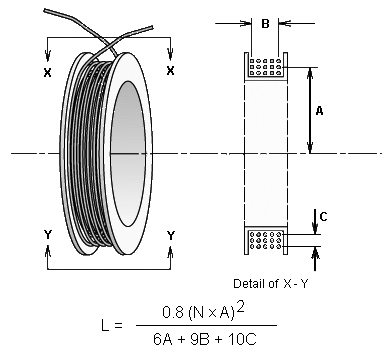With TJ Byers
Multi-Layer Coils: A Dumb Q?
Question:
I recently ran across a project that called for a multi-layer RF choke. It would seem to me that placing layers in parallel, one atop the other, would decrease the inductance, not increase it. I'm referring to the parallel inductor formula, which states

For example, if both inductors are 5µH, then the combination would equal 2.5µH. But when I wind these coils, I see no reduction in inductance no matter how many layers I add. In fact, the inductance hardly changes at all! Why is this so? If it's true, as my test show, what's the advantage or purpose of having a multi-layer coil over a single-layer coil? It uses more wire and takes more work to wind. I don't get it.
Stephen Hart
via Internet
Answer:
If these were separated single layer solenoids connected in parallel, then yes, the result would be reduced inductance. But they're not separate coils; they are, instead, mutually coupled coils which behave differently. Unlike resistors and capacitors, which are two dimensional, inductors carry with them a magnetic field. When magnetic fields interact, they change the properties of the current and voltage that produces them. This is the case of a multi-layer coil. The coupled inductance can be determined by the formula

where:
LT is the total inductance
L1 and L2 are inductance of the individual coils
M is the mutual inductance.

Without going into a lot of detail, take my word for it: The total inductance doesn't change as layers are added. So why do they do it? It increases the Q of the coil — the "figure of merit" or "quality" of an inductance coil. A circuit with a high Q has good efficiency, a narrow bandwidth and low loss.




Comments